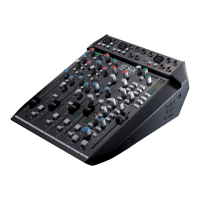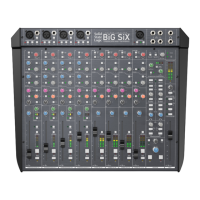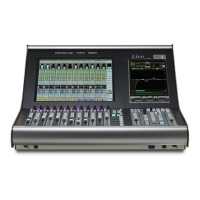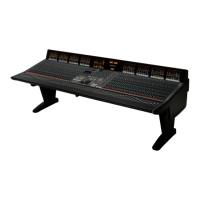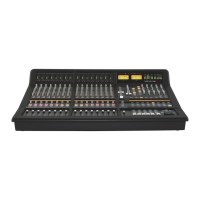"
Each 8-RMP remote microphone amplifier unit will require audio plus separate control cabling to be installed. Standard
audio-plus-control cable sets are available to order in 1m, 5m, 10m and 25m lengths.
Refer to page 6-10 for connector pinouts.
% $
Microphone inputs are via XLR 3-pin female connectors.
line-level outputs are provided on a 25-way D-type female connector. A pin-to-pin individually screened, balanced audio
cable should be used to connect the 8-RMP output to one of the Alpha-Link LIVE-R analogue input connectors.
The recommended maximum length of audio cable between Alpha-Link Live-R and 8-RMP is 50m. Although longer leads will
still function there is likely to be a gradual reduction of audio performance. Loss of control may occur at over 100m.
"$ $"
A separate RJ45 lead must be connected to each RMP unit to provide remote control of the gain, pad and phantom power
settings – standard RJ45 Ethernet cables can be used to connect to Alpha-Link &" units.
* The ‘Remote’ connector on the earlier Alpha-Link
Live
unit does NOT follow standard Ethernet pinout. Refer to page 6-10
for the custom cable pinout. Alternatively, leads are available to order in 1m, 5m, 10m and 25m lengths.
"$ "$ %"$
The 8-RMP units must be configured with an identification number (ID-1, 2 or 3) via the front panel buttons to match the
corresponding ‘Remote’ port used on the controlling Alpha-Link. A unit configured to be ID-1, for example, will not
respond if connected to Alpha-Link LIVE-R ‘Remote’ ports 2 or 3.
!
! ! !
a. Switch off the power, remove the RJ45 control lead and re-apply power to the 8-RMP unit.
If the unit is already communication with an Alpha-Link LIVE-R it will not be possible to alter the configuration.
b. Press the ‘TYPE’ and ‘GAIN switches down together for about 1 second.
This will enter the configuration mode.
c. The ‘0’ level LED should flash.
This indicates that the unit is in its channel-ID setup mode. (If either the ‘10’ or ‘16’ LEDs is lit instead then press the ‘INPUT’
button once or twice until the ‘0’ LED lights).
d. One of the ‘+48v’ lights will also be lit.
This indicates the current channel ID number.
e. To alter the current channel ID number press the ‘UP’ or ‘DOWN’ buttons on the front panel until the
required channel is indicated.
NB. It is possible to set channel numbers above ID3. Settings ID4 and above are invalid and will result in a loss of control
of the unit.
f. Press the ‘TYPE’ and ‘GAIN switches down together for about 1 second.
This will exit the configuration mode. Remember to reconnect the control lead.
1
2
3
4
433+)9/43
389'11'9/43'3:'1 +)9/43389'11'9/43? '-+
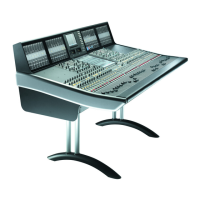
